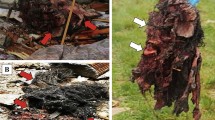Abstract
Objectives:
To provide an overall assessment of the response to the terrorist bombings in Madrid, 11 March 2004, which were considered the deadliest terrorist attack on European soil in modern times.
Materials and Methods:
Overall data on the number of victims treated at the scenes and at primary care facilities and hospitals, as well as the logistics involved, were reported by the EMS and the Health Authority of the Comunidad de Madrid local government. Data were mainly obtained by retrospective chart review, and did not include casualties who had only emotional shock, superficial bruises or transient hearing loss from barotraumas without eardrum perforation. We defined as critical any casualty with an Injury Severity Score (ISS) >15.
Results:
Over 70,000 personnel were mobilized in the care of the victims. EMS response and total evacuation times at the four blast scenes averaged 7 and 99 min, respectively. There were around 2,000 casualties, and a typical bimodal distribution of deaths, with 177 immediate fatalities and 14 subsequent in-hospital deaths. Almost 60% of casualties were taken to the two closest hospitals. Problems related to security, identification of casualties and record-keeping were encountered at the closest hospital. Closed doors increased the immediate fatality rate in the trains. Most survivors had noncritical injuries, but 14% of the 512 casualties assessed had an ISS >15. The critical mortality rate was 19.5%. The most frequently injured body regions were the head/neck and face. In all, 124 major surgical interventions were performed on 82 victims in the first 24 h, and orthopedic trauma procedures accounted for 50% of the case load. Most patients with lung injuries from the blasts required intubation and mechanical ventilation, and their survival rate was 88.3%. Also, 35% of laparotomies were either negative or nontherapeutic.
Conclusion:
There was a rapid EMS response and evacuation, but also overtriage, uneven distribution of casualties and difficulties in communication. The sizes and resources of the closest hospitals, as well as the early hour, were probably decisive in the adequacy of the overall response.
Similar content being viewed by others
Author information
Authors and Affiliations
Corresponding author
Additional information
First Published on January 29, 2007. Doi 10.1080/15031430701680340
Rights and permissions
About this article
Cite this article
Turégano-Fuentes, F., Pérez-Díaz, D., Sanz-Sánchez, M. et al. Overall Asessment of the Response to Terrorist Bombings in Trains, Madrid, 11 March 2004. Eur J Trauma Emerg Surg 34, 433–441 (2008). https://doi.org/10.1007/s00068-008-8805-2
Received:
Accepted:
Published:
Issue Date:
DOI: https://doi.org/10.1007/s00068-008-8805-2




